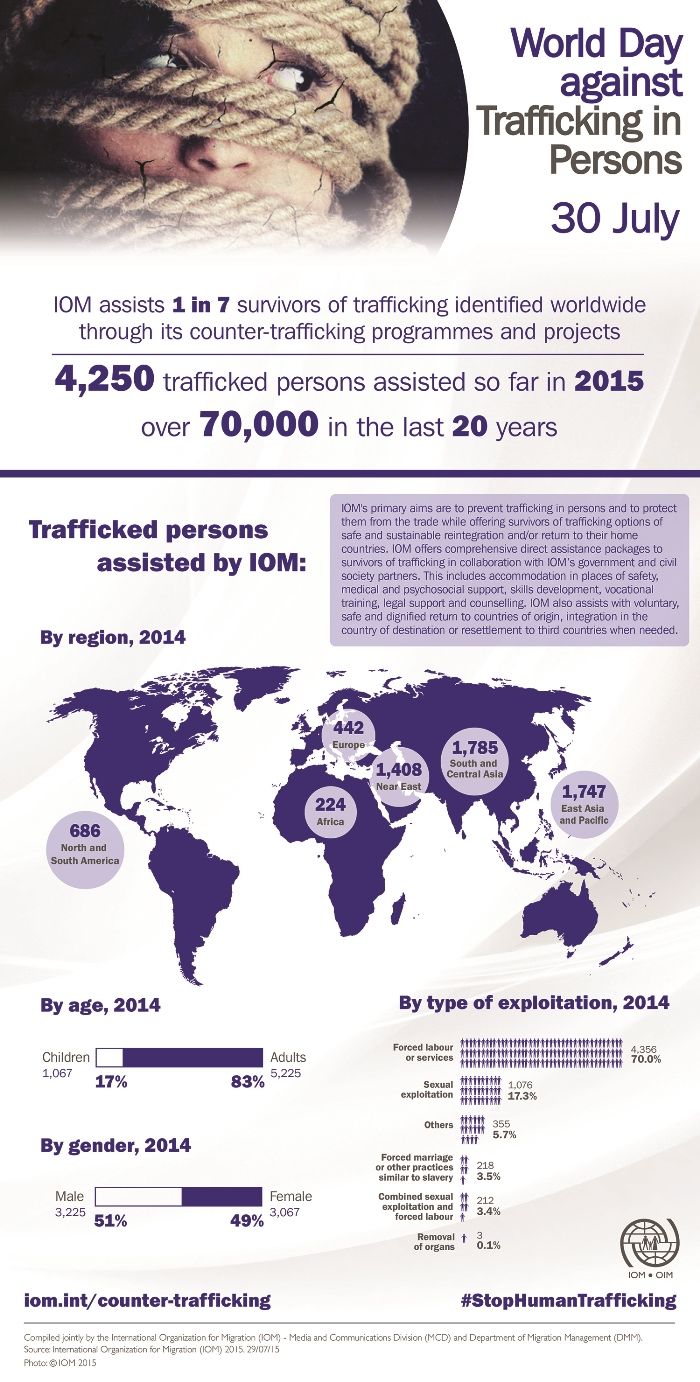Tento článok je publikovaný len v anglickom jazyku.
Geneva, July 30, 2015 – Citing a new study, “Addressing Human Trafficking and Exploitation in Times of Crisis”, International Organization for Migration Director General William Lacy Swing called the exploitation and trafficking of victims, a growing phenomenon in a world awash in conflict and natural disasters.
“Trafficking in persons not only flourishes during a disaster, it is a direct result of disasters, every bit as much as the infrastructural damages, the loss of life or the food shortages which garner far more attention,” said Ambassador Swing.
He added: “In all three categories of disaster – conflict zones, natural calamities, or man-made disasters – we found that the lack of normalcy allowed traffickers to exploit existing or crisis-induced vulnerabilities. In conflict, the lack of rule of law creates a condition of impunity, where people are trafficked to finance war, to provide sexual services, and to reinforce enslavement of ethnic minorities.”
Ambassador Swing cited a growing trafficking crisis in Libya and countries across the Middle East, where migrant workers are facing increasingly hostile and abusive working conditions. He warned that the on-going conflict in Syria has forced many families and individuals to adopt harmful coping mechanisms such as forced early marriages and child labour, often resulting in exploitation and trafficking.
“Addressing Human Trafficking and Exploitation in Times of Crisis” looked at the armed conflicts in Libya, Iraq, Syria and across West Africa, at the earthquakes in the Indian Ocean region, Haiti and Nepal, Typhoon Haiyan in the Philippines, and the protracted unrest in Eastern Africa leading to migration through North Africa and onwards to Europe.
Out of millions of men, women and children trafficked each year, only approximately 45,000 victims are identified. IOM assists one in seven of those cases, helping victims return to normal lives often after years of appalling abuse and cruelty.

In one recent case, IOM helped free 600 men from fishing trawlers in the seas off Indonesia. Some had not been on dry land for years; one of the victims had been separated from his family, without any contact, for 22 years. “People like this need understanding and help, often long-term, in times of stability as much as in times of crisis,” Ambassador Swing said.
He concluded: “The chaos that results from massive natural disasters such as those seen in Nepal, the Philippines, Haiti and the Tsunami-affected countries in the Indian Ocean region can provide a perfect laboratory for trafficking activities where criminals experiment with new ways of exploiting vulnerable people. Meanwhile irregular migrants on the dangerous and remote migratory corridors of northern Africa can quickly be found by traffickers and duped into slavery.”
To access the study, “Addressing Human Trafficking and Exploitation in Times of Crisis,” please download here: http://ow.ly/PfG6F.
For further information please contact IOM HQ:
Laurence HART, Head, Migrant Assistance Division, Táto e-mailová adresa je chránená pred spamovacími robotmi. Na jej zobrazenie potrebujete mať nainštalovaný JavaScript., + 41 79 833 64 11
or
Mathieu LUCIANO, Head, Assistance to Vulnerable Migrants Unit, Táto e-mailová adresa je chránená pred spamovacími robotmi. Na jej zobrazenie potrebujete mať nainštalovaný JavaScript., +41 79 701 15 23.
 Slovenčina
Slovenčina
 Українська (Україна)
Українська (Україна)
 English
English
